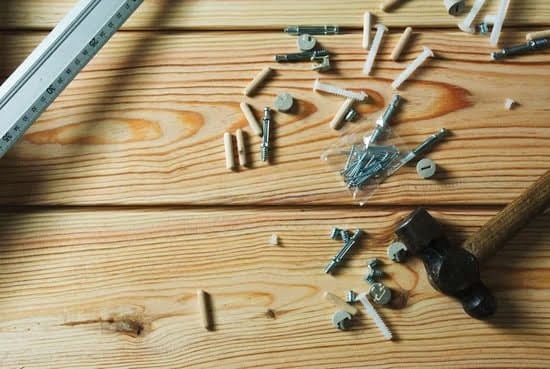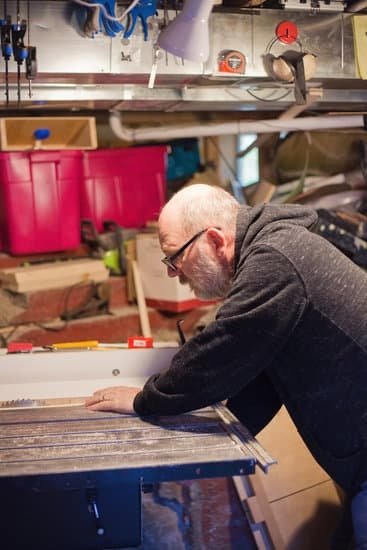Introduction
When it comes to woodworking, choosing the right type of wood is an essential decision. Different woods offer different benefits and characteristics, so it is important to have an understanding of what each type of wood offers in order to make an informed selection for your project. There are various types of wood that can be used for woodworking, each with their own advantages. These types include pine, oak, maple, cherry and walnut. Pine is a softwood that is relatively inexpensive while providing good strength and stability. Oak is a hardwood that offers exceptional durability and fine grain patterning. Maple provides a strong working surface through its dense grain structure and shades of white and browns. Cherry has a warm coloring and offers very consistent grain patterns creating complex vision when finished. Finally walnut offers deep colors varying from light tan to deep purples and shines when polished or put through various finishing processes. No matter your choice you will find all these woods provide excellent options for your next project regardless if you are building furniture or doing repairs around the house!
Choosing Locally Sourced Wood
Buying locally sourced wood offers many advantages. The main advantage is that you are directly supporting your local businesses and the local economy; this helps to keep industries alive and creates sustainable jobs. Additionally, buying locally sourced wood means that you can get a higher quality product because it hasn’t been sitting around in warehouses or shipping containers for any length of time. Locally sourced woods often come from very experienced craftspeople, meaning that you know exactly what you’re buying before it reaches your machinery. As well, it’s much easier to return products or to fix any issues with locally bought wood quickly as opposed to having to wait for days for a response from some distant source. Finally, when buying locally sourced woods you have the opportunity to build relationships with the people who supply it and learn about upcoming specials or deals on quality stock materials before anyone else in your town.
How to Identify Quality Wood
When it comes to buying wood for woodworking, there are a few key things to keep in mind. First and foremost, quality is important – the better the quality of the wood, the better your project will turn out. To identify high-quality wood, look for pieces that have a uniform grain and even hue, with minimal blemishes or knots. The end grain should be smooth with no discoloration or checks. Additionally, take a close look at any mouldings or carvings that come on the piece of wood – they should be clean and crisp.
It’s also important to research what type of wood is best suited for your project needs before buying. Different types of woods have different grain patterns, textures and durability characteristics that play an important role in crafting a successful piece of furniture or artwork. Make sure you know which kinds of woods will work best for certain tasks (e.g., softer woods work well for intricate carving projects), and avoid selecting mixed hardwoods unless you’re confident in your skills as a craftsman. Finally, remember not all expensive woods are of high quality – so shop around for the best price and read up on customer reviews if possible.
The Timber Quality Scale
Premium Grade: This grade is virtually free of defects, with few or no knots present. It has a uniform color and texture throughout the piece.
Select Grade: This grade can contain some defects such as unrepaired nail holes, discoloration, missing bark, and may contain small to medium knots.
Common Grade: This grade will typically have quite a few defects like missing chunks of wood grain, split ends, knot holes and multiple colorations through out the piece.
Culls/Factory Run/Mill Rejects: These grades are typically less than an inch thick with several serious defects due to weather or mishandling. They usually don’t meet building or safety codes for their intended use and should only be used in craft projects or other non-essential woodworking applications.
Cost Management
When selecting wood for woodworking, it is important to stay within your budget. Budgeting can be a challenging part of any woodworking project. To save money, it’s best to look for types of wood that offer good quality at a reasonable cost. Pine is often an inexpensive option for small projects, and oak is great for larger pieces that require strength and durability. If you’re looking for certain types of grain or finishes, walnut and cherry are good picks as well. Additionally, reclaimed woods are becoming increasingly popular due to their character and affordability. They offer a unique appearance from years of wear as well as saving a tree in the process. When buying at the store, check for cracks and signs of damage so you don’t end up with weak boards that need replacing later on. Asking around your local woodworking community or completing research online can help you find reputable suppliers that sell quality products at reasonable prices.
Softwood vs. Hardwood
Softwood is generally known to be easier to work with than hardwood due to its lighter weight, and is also less expensive. Softwoods are typically available as boards in standard sizes, with more consistency in color and grain pattern than hardwoods. Considerations when selecting softwood include the type of project you’re working on, how it will look when finished, and the price you’re willing to pay.
Hardwood is heavier and usually more expensive than softwood. Because of its density and strength, hardwood is notably more durable for furniture making and other woodworking projects that will see heavy or constant use over time. Hardwoods come in a higher quality material but often offer less uniformity in sizing; boards may vary significantly in width or length from each other. They also have more individual variation in texture and color, adding character to your projects ” but consider how this will look with your design before purchasing harder woods for your project.
Preparing the Materials
Before cutting and working with wood for a woodworking project, it is important to properly prepare the material. The first step for this is to inspect the wood for any major defects and damage, such as warps, knots, splits and checks. Any pieces of wood that have these characteristics should be avoided or cut from your project. Next, the wood should be run through a planer or jointer, if available, in order to flatten one side. This allows you to establish preliminary measurements if you need specific dimensions such as width or thickness in your final product. A miter saw can then be used to crosscut the material into lengths appropriate for your design. After that, you’re ready to start on your woodworking project.
Essential Tools
When woodworking, one should always aim to purchase the highest quality tools possible. Essential tools include saws (hand saws and power saws), chisels, routers (fixed and plunge), planes, routers, planers, sanders, clamps, drills (cordless drills and right angle drills), braces and bits. Additionally, depending on the project one is working on there may be several more specialty tools required. The most important thing to remember when buying these kinds of tools is that you should buy the best quality possible as they are intended to last a lifetime if properly maintained and cared for. Cheaper versions may cost less initially but in the long run they can be expensive due to their inferior build quality.
Safety Measures
When buying wood for woodworking, it is important to consider a number of safety measures. For starters, when purchasing lumber, make sure it is free from any visible defects such as splits or cracks in the wood. Also, it is imperative to wear protective gear including safety glasses and gloves when handling the wood to avoid potential irritation or splinters. When operating power tools or cutting the wood, exercise caution by guarding the blade to prevent injury. Lastly, ensure that your woodworking space is well ventilated and always wear a dust mask when sawing, sanding, and routing to prevent inhalation of hazardous particles from wood dust.
Conclusion
When it comes to woodworking, it can be quite difficult to determine what type of wood to purchase for your projects. Different types of wood have different properties that affect their suitability for different applications. As a general rule, hardwoods such as oak, maple and walnut are good choices as they are strong and durable. Softwoods like pine and spruce are usually more economical but may not be as strong or long-lasting. To ensure your project looks its best, choose a wood that matches any existing furniture or décor in the room. Consider the grain structure and colors of the pieces you plan to create; some woods produce distinct patterns while others can vary drastically. Finally, examine what finish options are available on any particular type of wood before making your final selection. In conclusion, determining the right type of wood for your project requires research and consideration of both aesthetics and practicality; investing a little extra time and money upfront will ensure a successful end result with lasting quality and beauty.

Hi everyone! I’m a woodworker and blogger, and this is my woodworking blog. In my blog, I share tips and tricks for woodworkers of all skill levels, as well as project ideas that you can try yourself.





